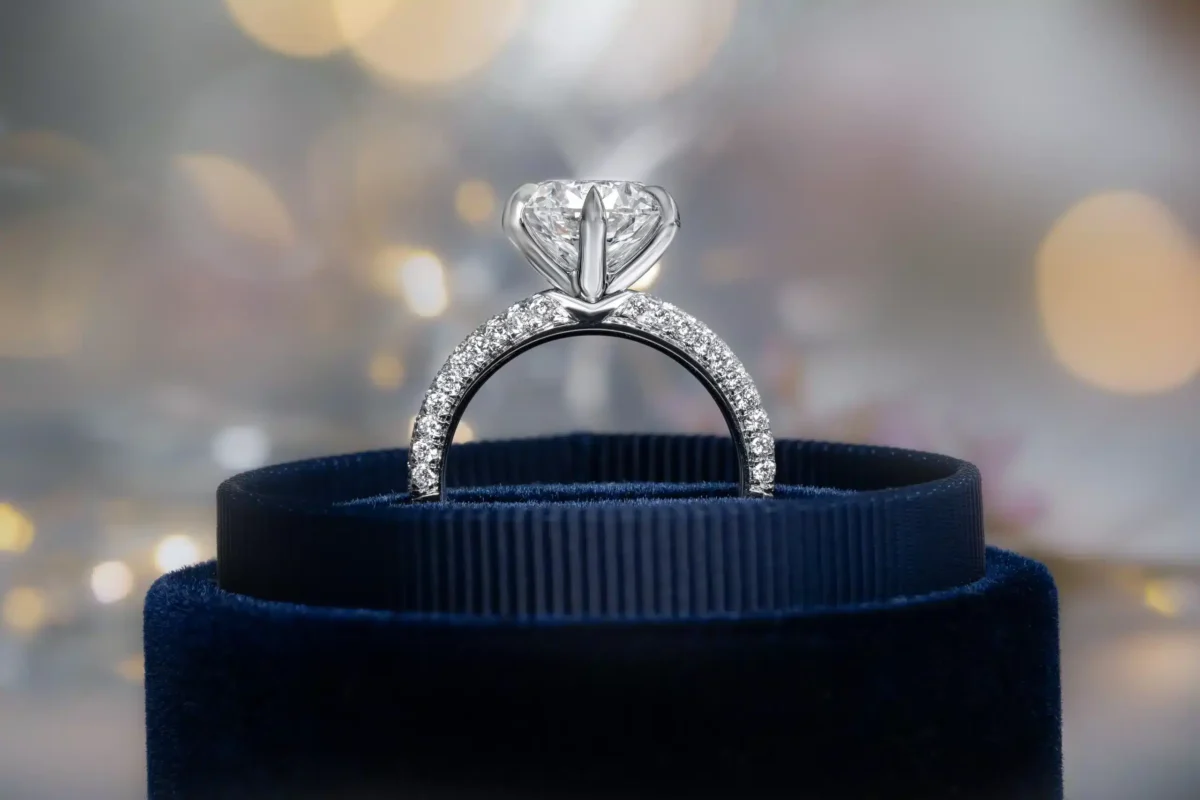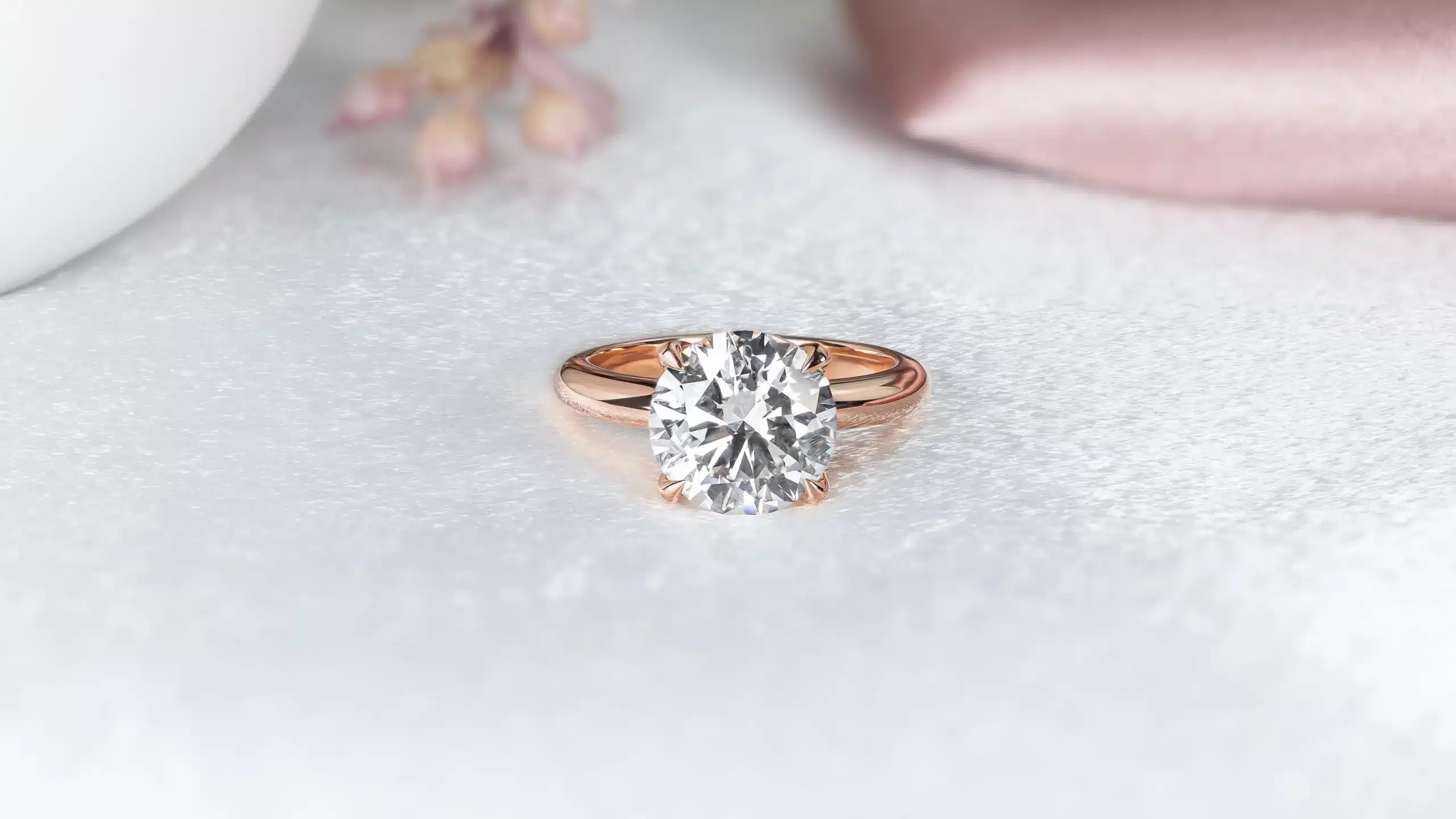

Lab Grown diamonds represent cutting-edge gem technology, offering beautiful precious stones at competitive price points, with a brilliance and glitter equal to naturally mined diamonds. But not all Lab Grown diamonds are made equal, and it’s important to know the differences between the processes that create them, and the unique qualities and characteristics they each possess.
What Are Lab Grown Diamonds?
As discussed in an earlier article exploring the beauty of Lab Grown or synthetic precious stones, Lab Grown diamonds are real diamonds that have been created in lab conditions that mimic the process that naturally occurs underground. Lab Grown diamonds have been around since the mid 1950s, but over the last ten years, processes have become more efficient and the results more refined, and their popularity has skyrocketed, offering a competitively priced option that possesses all the elegance and beauty of their natural counterparts.
Lab Grown diamonds are created via two methods – CVD and HPHT. While both these processes produce beautiful stones subject to the same grading processes and standards as natural precious stones, there are certain characteristics unique to the diamonds created by each process, that anyone searching for their perfect stone should be aware.
Before we begin, it is important to note that it is impossible to tell the difference between a natural diamond, a Lab Grown CVD diamond, and a Lab Grown HPHT diamond through the naked eye. The differences we explore below can only be identified by a specialist, with high specification equipment. An eye-clean diamond is a beautiful thing, and the below should take the beauty of an eye-clean diamond into consideration!
HPHT, or High Pressure High Temperature, is one of the oldest Lab Grown diamond techniques, having been first used successfully by General Electric in 1954. This process involves replicating the extreme temperature and pressure conditions that produce natural diamonds.
Carbon material – what’s called a diamond ‘seed’ – is placed inside a growth chamber that is heated to 1300 – 1600°C, and pressurised to 870,000 pounds per square inch. The diamond seed dissolves, carbon atoms form, and a diamond begins to grow. The resulting rough diamond is then cut and polished into a glittering precious stone.
Mimicking the natural conditions that occur deep within the earth is no easy feat. The HPHT process is costly, requiring complex equipment and extensive use of resources to create high energy conditions.
During the HPHT growth process, metals used as catalysts can sometimes enter the growing diamond. These flux metal alloys contain elements including iron, nickel and cobalt that sometimes remain visible in the resulting diamond as metallic inclusions. These inclusions appear opaque in transmitted light, and metallic in reflected light.
As a result of the unique metal alloys used in the HPHT process, it is possible for diamonds created by this process to be affected by boron impurities, resulting in a blue nuance. On the plus side, HPTP diamonds will never exhibit brown tones, nor do they experience strain-induced birefringence, which refers to an undesired refraction of light that creates fine ‘lines’ in the diamond’s facets.
CVD stands for Chemical Vapor Deposition. This method is similar to the HPHT process, but drastically reduces the extreme resources required, and as such, is cheaper to produce. While the HPHT process was developed in 1954, the CVD method is a recent technological development, with CVD diamonds entering the market a decade ago, where they have become available with increasing popularity.
CVD diamonds follow a similar process to HPHT, in that diamonds are grown from a diamond ‘seed’ material. The differences lie in the intensity of the conditions. A diamond seed crystal is placed within a diamond growth chamber, which is then filled with a hydrogen gas mixture. The chamber is then heated to 900-1200°C. At this stage in the process, a microwave beam is introduced and creates a catalyst for the creation of a
plasma cloud, which in turn creates carbon that is deposited on a seed crystal, and a diamond begins to grow.
While the CVD diamond growth process is much more cost efficient than the HPHT process, the difference in price is rarely notable.
While the CVD process produces diamonds more quickly than the HPHT method, this speed, and the carbon gases used, can result in something referred to as vacancy clusters, that create brown or grey tones. It is also possible for CVD diamonds to exhibit strain-induced birefringence, or fine lines on the facets of the diamond.
CVD diamonds do not experience metallic inclusions, rather dark mineral inclusions, which do not have a metallic glint.
All diamonds, whether natural or Lab Grown, are privy to the same grading process. All diamonds are graded across the 4Cs; Cut, Colour, Clarity, and Carat, and undergo rigorous review and classification on their overall quality, including the prevalence of any inclusions, in a GIA or IGI grading report. You can get the inside scoop on how to read a grading report here.
Yes – HPHT diamonds can experience blue nuance, CVD diamonds can have brown or yellow tones, and both can experience inclusions, but don’t forget natural diamonds are not exempt from flaws either. A beautiful stone with a good grading is just that – beautiful. The best way to ensure you are getting the right stone, at the right price, is by ensuring you use a jeweller dedicated to selecting excellent, impressive stones. Diamondport are committed to sourcing beautiful, unique and striking precious stones, from ethical suppliers who have a reputation for high quality diamonds and gemstones.
Find the perfect diamond for your piece of fine jewellery in our Brisbane studio.
Book your private consultation today.
Explore Rings by Cut
Explore Rings by Style
Explore Rings by Type
Services & Community
About
Contact Us
Diamondport Jewellers supports diversity in all its forms.
We acknowledge the traditional owners of the land of which we work here at Diamondport Jewellers and pay our respects to the Turrbal people and their elders both past and present.
Address: Suite 402, Level 4,
180 Queen Street, Brisbane City, 4000




Diamondport Jewellers supports diversity in all its forms.
We acknowledge the traditional owners of the land of which we work here at Diamondport Jewellers and pay our respects to the Turrbal people and their elders both past and present.